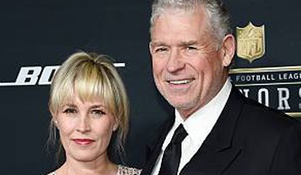NFL Painkiller Lawsuit "Revived"

In 2014, shortly after Richard Dent, Jeremy Newbery, Roy Green J.D. Hill, Keith Van Horn, Ron Stone, Ron Pritchard and Jim McMahan filed a class action lawsuit against the NFL, claiming the league illegally plied them with powerful prescription painkillers to keep them on the field, I posted the following article: Is the NFL a Drug Cartel?
In the article I stated that Steve Silverman, the attorney for former players in the Drug lawsuit, alleged that NFL training rooms had become drug markets. In an article entitled "NFL Training & Locker Rooms are Drug Markets", he is quoted as saying "The NFL is going to have to change the game and they have no choice. We are not talking about player responsibility we are talking about a drug cartel."
Since the initial filing, more than 1,500 former players have joined the class action lawsuit.
The Washington Post surveyed more than 500 former players about their experiences with drugs in the NFL. One in four said they felt pressure from team doctors to take medication he was uncomfortable with – spawning a “Culture of Prescription Drug Abuse.”
There are approximately 20,000 former players, so (one in 4) would suggest that around 5,000 players might be "uncomfortable" - to put it mildly. Is it a coincidence that 5,000 players sued the NFL over the Concussion issue?
The District Court Judge dismissed the case in 2014, saying the collective bargaining agreement was the appropriate forum to resolve the players' claims. But now, a U.S appeals court has revived the drug lawsuit.
“Revived” is an interesting choice of words since we know that opioids are killing people every day - and most of them can’t be revived. Research shows that NFL players are more likely to use and abuse opioids than the general population. That's not hard to believe when you consider that pain killers were distributed to players like candy.
The three-judge panel of the 9th U.S. Circuit Court of Appeals ruled unanimously that the lawsuit is not superseded by Collective Bargaining Agreements - a ruling that could also give some hope to those players that opted out of the NFL Concussion Settlement and are continuing to pursue their cases.
The appeals court said that when the NFL provided players with prescription drugs, it engaged in conduct that was completely outside the scope of the CBAs. In the ruling, Judge Richard Tallman wrote that "As pled, the players' claims do not constitute a dispute over the rights created by, or the meaning of, the CBAs," and that “the lawsuit had nothing to do with the collective bargaining agreements.”
The fight is not over. The NFL has many other legal arguments and objections they will present in court. The last thing they want is for this case to get to the “Discovery” phase. That could provide some very ugly information about what they were doing behind the scenes – away from the prying eyes of the players and the public. Before that happens, the NFL may prefer to settle the case. Only time will tell, but in the meantime, if you are interested in getting more information about the class action lawsuit you can got to the Law Firm’s website at this link: NFL Drug Class Action Lawsuit
You can also call them at the NFL Drug Class Action Hotline (855) 780-8135.
For general inquires, you can email them at: [email protected]
Lastly, I want congratulate the former players that filed the initial lawsuit. It’s not easy being David when you’re going up against Goliath - but we all know how that battle ended.
The NFL Concussion litigation showed us that when 5,000 slingshots are aimed correctly, we can bring down any giant.


